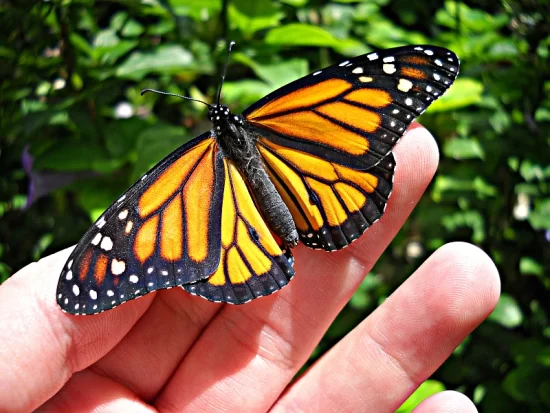Do Butterflies Bite? Do you need to be careful the next time you spot one in your garden? Time to get into the details!

Purple Butterfly Meaning
Butterflies – An Overview
Butterflies thrive in various environments, from open meadows and woodlands to wetlands, deserts, and even urban areas. Their contribution to pollination, their role in ecosystems, and their ability to bring joy to observers make butterflies an integral part of the natural world.
Beautiful Black and Blue Butterflies
Do Butterflies Bite?

No, butterflies do not bite. Their specialized proboscis and gentle feeding behavior ensure they do not pose any harm to humans.
1. Butterfly Mouthparts and Proboscis
Butterflies have a unique feeding structure – proboscis, which functions like a straw for sipping nectar. Unlike many insects with biting or chewing mouthparts, butterflies lack such features.
2. Feeding Behavior
Butterflies primarily feed on liquid food sources, such as nectar from flowers, using their proboscis.
Do you know that butterflies also drink blood? Well, find out more here
3. Harmless to Humans
Importantly, butterflies are harmless to humans as their proboscis is not designed for harm. When they land on a person, it’s typically to gather moisture, salts, or minerals from the skin, known as “puddling.”
Do Butterflies Sting?

No, butterflies do not sting and lack the aggressive behavior associated with certain stinging insects like bees and wasps.
Unlike insects like bees and wasps, butterflies do not possess stingers or venomous capabilities. Their anatomy does not include a specialized structure for delivering stings.
How Do Butterflies Defend Themselves?

Although butterflies are not equipped with biting or stinging mechanisms, they have developed various other means of defense to ensure their survival in the wild. These mechanisms include:
- Camouflage: Many butterfly species have evolved intricate camouflage patterns on their wings to blend in with their surroundings. This helps them avoid predators by appearing inconspicuous.
- Warning Colors: Some butterflies display vibrant and conspicuous colors to signal to potential predators that they are toxic or unpalatable. This strategy, known as aposematism, discourages predators from attacking them.
- Mimicry: Several butterfly species mimic the appearance of other insects that are harmful to predators. For example, the viceroy butterfly resembles the toxic monarch butterfly, gaining protection by association.
- Rapid Flight: Butterflies are agile fliers capable of swift maneuvers that make it difficult for predators to capture them in flight.
What Does It Mean When a Butterfly Lands on You
Do Butterflies Bite – FAQs
Q1. Why do butterflies land on people, and does it feel like a bite?
A: Butterflies may occasionally land on people to gather moisture, salts, or minerals from the skin, a behavior known as “puddling.” This interaction might feel like a gentle tickle but is entirely benign and not a bite.
Q2. How can I attract butterflies to my garden?
A: To attract butterflies to your garden, you can plant nectar-rich flowers, provide host plants for caterpillars, offer water sources, and avoid using pesticides that may harm them.
Q3. Is it safe to handle butterflies?
A: Handling butterflies is generally safe, as they are harmless to humans. However, it is essential to be gentle and avoid harming their delicate wings.


